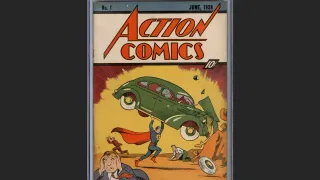October 29, 2024
Teri Garr, the Offbeat Comic Actor of 'Young Frankenstein' and 'Tootsie,' has Died
Bob Thomas READ TIME: 4 MIN.
Teri Garr, the quirky comedy actor who rose from background dancer in Elvis Presley movies to co-star of such favorites as "Young Frankenstein" and "Tootsie," has died. She was 79.
Garr died Tuesday of multiple sclerosis "surrounded by family and friends," said publicist Heidi Schaeffer. Garr battled other health problems in recent years, underwent an operation in January 2007 to repair an aneurysm.
The actor, who was sometimes credited as Terri, Terry or Terry Ann during her long career, seemed destined for show business from her childhood.
Her father was Eddie Garr, a well-known vaudeville comedian; her mother was Phyllis Lind, one of the original high-kicking Rockettes at New York's Radio City Music Hall. Their daughter began dance lessons at 6 and by 14 was dancing with the San Francisco and Los Angeles ballet companies.
She was 16 when she joined the road company of "West Side Story" in Los Angeles, and as early as 1963 she began appearing in bit parts in films.
She recalled in a 1988 interview how she won the "West Side Story" role. After being dropped from her first audition, she returned a day later in different clothes and was accepted.
From there, the blonde, statuesque Garr found steady work dancing in movies, and she appeared in the chorus of nine Presley films, including "Viva Las Vegas," "Roustabout" and "Clambake."
She also appeared on numerous television shows, including "Star Trek," "Dr. Kildare" and "Batman," and was a featured dancer on the rock 'n' roll music show "Shindig," the rock concert performance T.A.M.I. and a cast member of "The Sonny and Cher Comedy Hour."
Her big film break came as Gene Hackman's girlfriend in 1974's Francis Ford Coppola thriller "The Conversation." That led to an interview with Mel Brooks, who said he would hire her for the role of Gene Wilder's German lab assistant in 1974's "Young Frankenstein" – if she could speak with a German accent.
"Cher had this German woman, Renata, making wigs, so I got the accent from her," Garr once recalled.
The film established her as a talented comedy performer, with New Yorker film critic Pauline Kael proclaiming her "the funniest neurotic dizzy dame on the screen."
Her big smile and off-center appeal helped land her roles in "Oh God!" opposite George Burns and John Denver, "Mr. Mom" (as Michael Keaton's wife) and "Tootsie" in which she played the girlfriend who loses Dustin Hoffman to Jessica Lange and learns that he has dressed up as a woman to revive his career. (She also lost the supporting actress Oscar at that year's Academy Awards to Lange.)
Although best known for comedy, Garr showed in such films as "Close Encounters of the Third Kind," "The Black Stallion" and "The Escape Artist" that she could handle drama equally well.
"I would like to play 'Norma Rae' and 'Sophie's Choice,' but I never got the chance," she once said, adding she had become typecast as a comic actor.
She had a flair for spontaneous humor, often playing David Letterman's foil during guest appearances on NBC's "Late Night With David Letterman" early in its run.
Her appearances became so frequent, and the pair's good-natured bickering so convincing, that for a time rumors cropped up that they were romantically involved. Years later, Letterman credited those early appearances with helping make the show a hit.
It was also during those years that Garr began to feel "a little beeping or ticking" in her right leg. It began in 1983 and eventually spread to her right arm as well, but she felt she could live with it. By 1999 the symptoms had become so severe that she consulted a doctor. The diagnosis: multiple sclerosis.
For three years Garr didn't reveal her illness.
"I was afraid that I wouldn't get work," she explained in a 2003 interview. "People hear MS and think, 'Oh, my God, the person has two days to live.'"
After going public, she became a spokeswoman for the National Multiple Sclerosis Society, making humorous speeches to gatherings in the U.S. and Canada.
"You have to find your center and roll with the punches because that's a hard thing to do: to have people pity you," she commented in 2005. "Just trying to explain to people that I'm OK is tiresome."
She also continued to act, appearing on "Law & Order: Special Victims Unit," "Greetings From Tucson," "Life With Bonnie" and other TV shows. She also had a brief recurring role on "Friends" in the 1990s as Lisa Kudrow's mother. After several failed romances, Garr married contractor John O'Neill in 1993. They adopted a daughter, Molly, before divorcing in 1996.
In her 2005 autobiography, "Speedbumps: Flooring It Through Hollywood," Garr explained her decision not to discuss her age.
"My mother taught me that showbiz people never tell their real ages. She never revealed hers or my father's," she wrote. California voting registration records gave her date of birth as Dec. 11, 1947.
She said she was born in Los Angeles, although most reference books list Lakewood, Ohio. As her father's career waned, the family, including Teri's two older brothers, lived with relatives in the Midwest and East.
The Garrs eventually moved back to California, settling in the San Fernando Valley, where Teri was graduated from North Hollywood High School and studied speech and drama for two years at California State University, Northridge.
Garr recalled in 1988 what her father had told his children about pursuing a career in Hollywood.
"Don't be in this business," he told them. "It's the lowest. It's humiliating to people."
___
AP Entertainment Writer Mark Kennedy contributed to this report.






